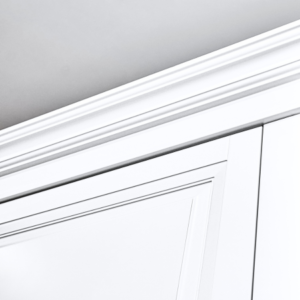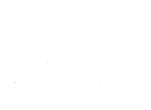Elevate Your Space: A Guide to Interior Trim Types and Applications
INTERIOR TRIM, CROWN MOLDING
In the realm of interior design, it’s often the details that make the biggest impact. From crown molding to baseboards, interior trim serves as the finishing touch that adds character, depth, and sophistication to any space. Whether you’re embarking on a renovation project or simply looking to refresh your home’s aesthetic, understanding the various types and applications of interior trim can help you achieve your desired look with finesse.
Understanding Interior Trim
Interior trim refers to the decorative moldings and millwork elements installed along the edges of walls, ceilings, doors, and windows. The primary function of interior trim is to conceal joints and transitions between surfaces, along with hiding imperfections. But interior trim also serves an aesthetic purpose, enhancing the architectural style and overall appeal of a room.
Your drywall contractor should be well-versed in the types of interior trim available. From traditional to contemporary, each has its own unique characteristics and applications. Here’s a breakdown of the most common types:
Types of Interior Trim
Crown Molding
Crown molding, also known as cornice molding, is perhaps the most iconic and versatile type of interior trim. Installed along the intersection of walls and ceilings, crown molding adds elegance and visual interest to a room while creating a seamless transition between surfaces. Available in various profiles and sizes, crown molding can range from simple and understated to ornate and elaborate, making it suitable for a wide range of architectural styles.
Baseboards
Baseboards, or skirting boards, are installed along the bottom edge of walls, where they meet the floor. Beyond serving the practical purpose of concealing the joint between the wall and floor, baseboards also protect walls from damage and add visual weight to the lower portion of a room. Like crown molding, baseboards come in a variety of styles and heights to complement different interior designs.
Door and Window Casing
Door and window casing, also known as trim molding or architrave, frames the perimeter of doors and windows, enhancing their appearance and providing a polished finish. Casing can be simple or decorative, depending on the desired aesthetic. It serves to conceal gaps between the door/window frame and the wall, while also adding architectural detail to the room.
Chair Rail
Chair rail molding is typically installed horizontally along the middle portion of a wall, roughly at chair height. Historically, its primary purpose was to protect walls from damage caused by chair backs, but today it serves more as a decorative element. Chair rail molding can help break up large expanses of wall, add visual interest, and create a sense of proportion and balance in a room.
Wainscoting
Wainscoting refers to the application of decorative paneling or molding on the lower portion of a wall, typically extending from the baseboard to the chair rail or lower. Beyond its decorative appeal, wainscoting can also serve a practical purpose by protecting walls from scuffs and scratches. It comes in various styles, such as beadboard, raised panel, and shiplap, allowing for customization to suit different design preferences.
Picture Rail
Picture rail molding is installed horizontally along the upper portion of a wall, typically a few inches below the ceiling. Its primary function is to provide a convenient way to hang artwork and decorative items without the need for nails or screws on the wall surface. Picture rail molding adds a touch of vintage charm to a space and allows for easy repositioning of wall decor.
Applications of Interior Trim
Now that we’ve explored the different types of interior trim, let’s delve into their various applications within a home or commercial space.
Define Architectural Style
Interior trim plays a crucial role in defining the architectural style of a space. Whether you’re aiming for a classic, traditional look with intricate moldings and rich wood finishes, or a more contemporary aesthetic with clean lines and minimalistic profiles, the right choice of trim can help achieve your desired ambiance.
Create Visual Interest
By incorporating different types of trim moldings, you can add depth, texture, and visual interest to an otherwise plain or monotonous space. Experiment with contrasting colors, profiles, and combinations to create focal points, accentuate architectural features, and elevate the overall design scheme.
Conceal Imperfections
Interior trim serves as a clever solution for concealing imperfections and irregularities in wall surfaces, such as uneven seams, gaps, or transitions between materials. Properly installed trim can create seamless transitions and smooth visual flow throughout a room, enhancing its overall aesthetic appeal.
Enhance Room Proportions
Strategic placement of trim moldings can visually alter the proportions of a room, making it appear taller, wider, or more balanced. For instance, installing crown molding at the intersection of walls and ceilings can draw the eye upward, creating the illusion of higher ceilings and a more spacious environment.
Personalize Your Space
Interior trim offers endless opportunities for personalization and customization. Whether you prefer a timeless and elegant look or a bold and contemporary statement, there’s a trim molding style and finish to suit your taste and complement your decor. Get creative with paint colors, finishes, and combinations to make your space truly unique.
Interior trim is a fundamental element of interior design that has the power to transform ordinary spaces into extraordinary ones. By understanding the different types and applications of trim moldings, you can unleash your creativity and achieve stunning results that enhance the beauty and functionality of your home or commercial space. So, whether you’re embarking on a renovation project or simply looking to refresh your interiors, don’t overlook the importance of interior trim—it’s the finishing touch that makes all the difference.


